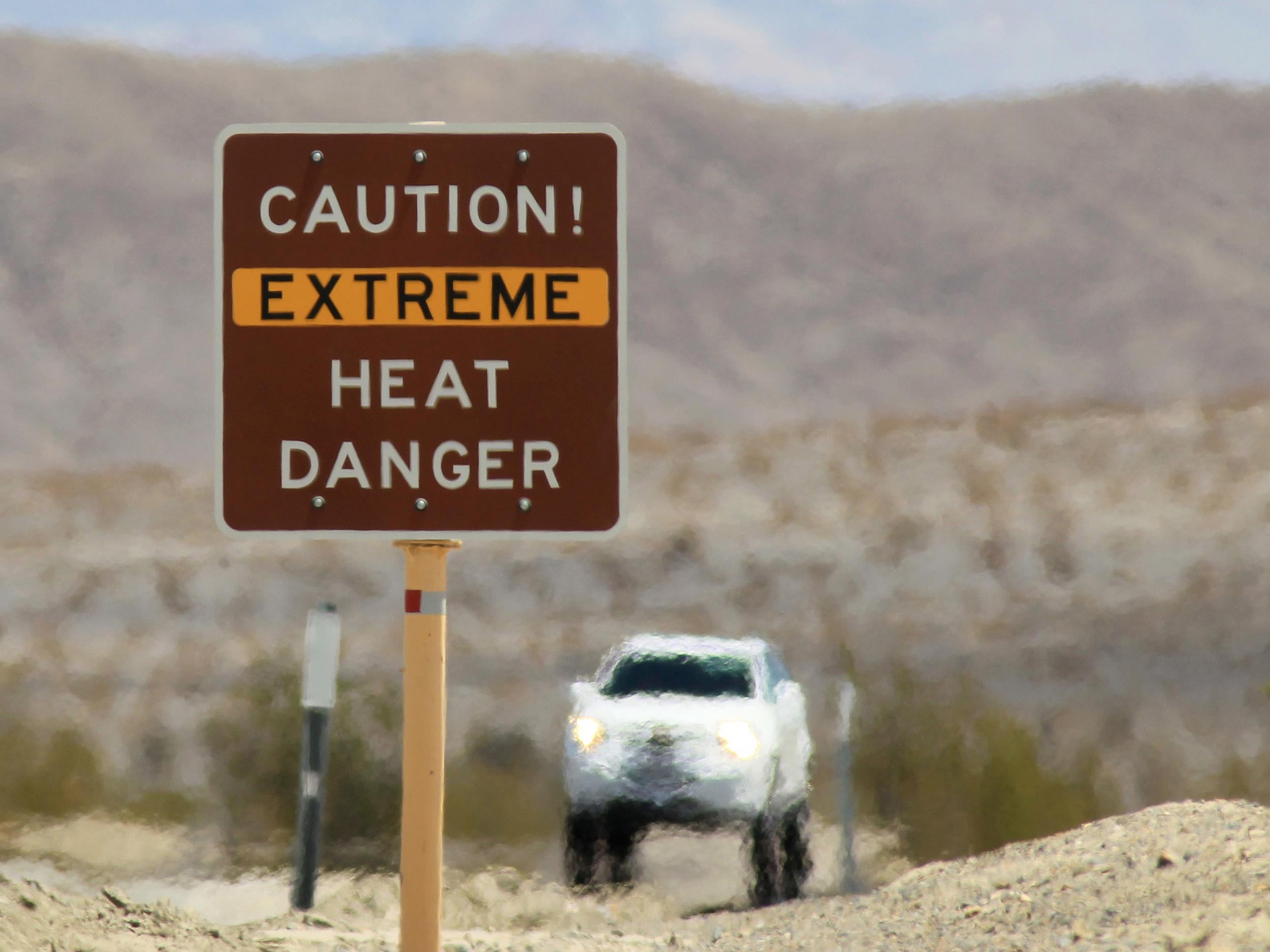[ad_1]

“Intolerable” heat and humidity caused by global warming had been expected in the coming decades, but now researchers have found that the crisis is already here.
A new study identifies thousands of previously rare or unprecedented bouts of extreme heat and humidity are taking place now across the world in Asia, Africa, Australia, South America and North America.
The southeastern region of the US saw extreme conditions dozens of times, near the Gulf Coast in east Texas, Louisiana, Mississippi, Alabama and the Florida Panhandle. New Orleans, Louisiana and Biloxi, Mississippi were worst hit.
The phenomenon is only now being recognised because prior studies focused on averages of heat and humidity measured over large areas and periods of several hours. In the new study, researchers zoned in on hourly data from 7,877 individual weather stations, allowing them to be more localised and exact.
Extreme heat and humidity episodes greatly impacted coastlines where evaporating seawater provides abundant moisture to be sucked up by hot air, the study noted.
However the effects could also be felt inland in Arkansas and along the southeastern coastal plain, where moisture-laden monsoon winds or vast crop irrigation appear to cause the same effects.
In the Persian Gulf, researchers found more than a dozen recent brief extreme heat outbreaks which threatened human survival.
The current episodes are localised and lasted a matter of hours but they are increasing in frequency and intensity, say the authors of the study, which appears this week in the journal Science Advances.
Such conditions not only pose extreme risk to human life but have the potential to decimate economies.
“Previous studies projected that this would happen several decades from now, but this shows it’s happening right now,” said lead author Colin Raymond, who did the research when he was a PhD student at Columbia University’s Lamont-Doherty Earth Observatory. “The times these events last will increase, and the areas they affect will grow in direct correlation with global warming.”
The researchers analysed data from weather stations from 1979 to 2017 and found that extreme heat/humidity combinations doubled in that time.
Repeated hot spots were found across India, Bangladesh and Pakistan. Northwestern Australia was another extreme heat zone along with the coasts of the Red Sea and Mexico’s Gulf of California.
The highest, potentially fatal readings, were spotted 14 times in the cities of Dhahran and Damman, Saudi Arabia; Doha, Qatar; and Ras Al Khaimah, United Arab Emirates. More than 3m people live in these regions.
Parts of southeast Asia, southern China, subtropical Africa and the Caribbean were also effected by extreme heat and humidity episodes.
Humid heat is worse for people than ”dry” heat because when the air is already heavy with moisture, it slows the evaporation of sweat, the human body’s cool-down process. In the most extreme conditions, sweating could stop altogether.
In these extreme humid heat zones, unless people can get into an air-conditioned room, the body’s core soars beyond the range it can survive and organ failure begins. Even someone in good health, in the shade, wearing no clothes and with unlimited drinking water, would die within hours, the study has found.
The heat/humidity effect is measured by the so-called “wet bulb” Centigrade scale. In the US, it’s the ”heat index” or “real-feel” Fahrenheit readings. (The National Weather Service has a helpful chart here).
Previous research shows that even if a person is in peak, physical condition, when the heat index hits 132F (or 32C on the “wet bulb”) then outdoor activities become impossible.
At 35C — which happened briefly in the Persian Gulf cities — temperatures become life-threatening. A reading of 35C translates to around 160F on the heat index but the scale ends at 127F, therefore the temperature goes literally off the charts.
The study found that wet-bulb readings close to or topping 30C have doubled since 1979 around the world.
There were around 1,000 readings of 31C, something that was believed to be a rare occurrence. A reading of 33C, thought to hardly exist, actually occurred around 80 times.
In July 2019, a heat wave saw heat indexes approaching 115F in the US.
The highest recorded temperature was 122F in Baltimore, Maryland during another heatwave last August. The conditions led to at least six deaths: four in Maryland, an air-conditioning technician in Phoenix, Arizona and former NFL player, Mitch Petrus, who died in Arkansas while working outside his parents’ store. Events were cancelled across the country including the NYC triathlon for the first time.
In the US, around 90 per cent of households have air-conditioning. High-humidity heat waves in Russia and Europe, where far fewer people have air conditioning, have killed tens of thousands, the study found.
Radley Horton, a Lamont-Doherty research scientist and co-author of the paper, previously worked on a 2017 paper projecting that such conditions would not take hold until later in the century.
“We may be closer to a real tipping point on this than we think,” Horton said.
In wealthy countries, AC can provide some respite from the extreme humidity and heat but if the conditions are seen more frequently, it could force people indoors for longer periods of time. The economic effects of extended periods of time indoors, during the coronavirus lock downs, are being felt acutely around the world.
In the developing world, increased heat and humidity will have life-threatening implications. It’s hard to avoid extreme heat when your livelihood depends on outdoor work and there is a lack of electricity, let alone air conditioning. Extreme heat may make regions uninhabitable and lead to migration of many communities.
Steven Sherwood, a climatologist at the Australia’s University of New South Wales, said: “These measurements imply that some areas of Earth are much closer than expected to attaining sustained intolerable heat. It was previously believed we had a much larger margin of safety.”
Kristina Dahl, a climatologist at the Union of Concerned Scientists, said some areas may already be seeing conditions worse than the study suggests, because weather stations do not necessarily pick up hot spots in dense, concrete-heavy city neighbourhoods. Cities have been installing “green alleys” made of materials that absorb heat more readily than concrete and asphalt and painting roofs white to reflect the sun.
Source link
Y Not Freakin’ Recyclable Home
 Pollution Climate Change Holocene Deforestation Population Acidification Y Not Freakin' Recyclable
Pollution Climate Change Holocene Deforestation Population Acidification Y Not Freakin' Recyclable



